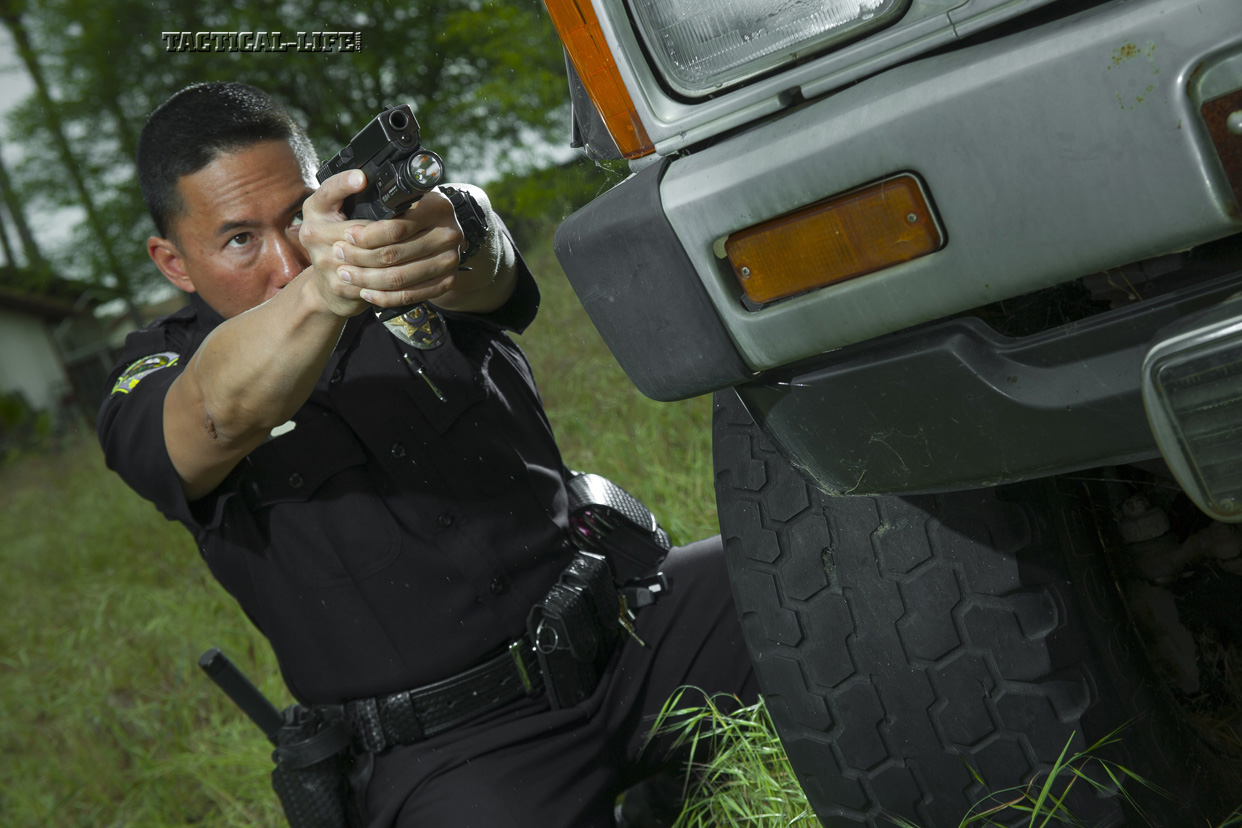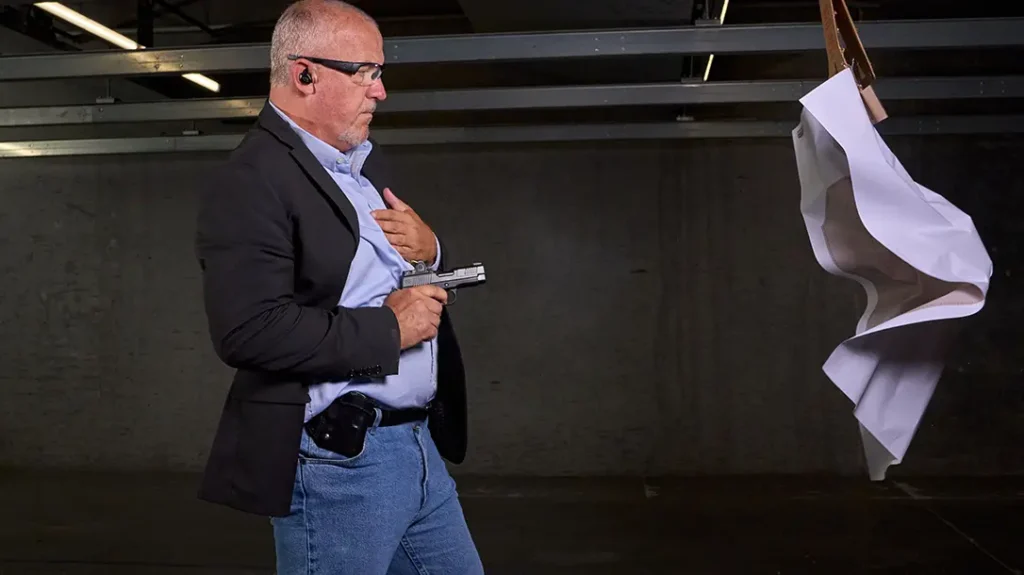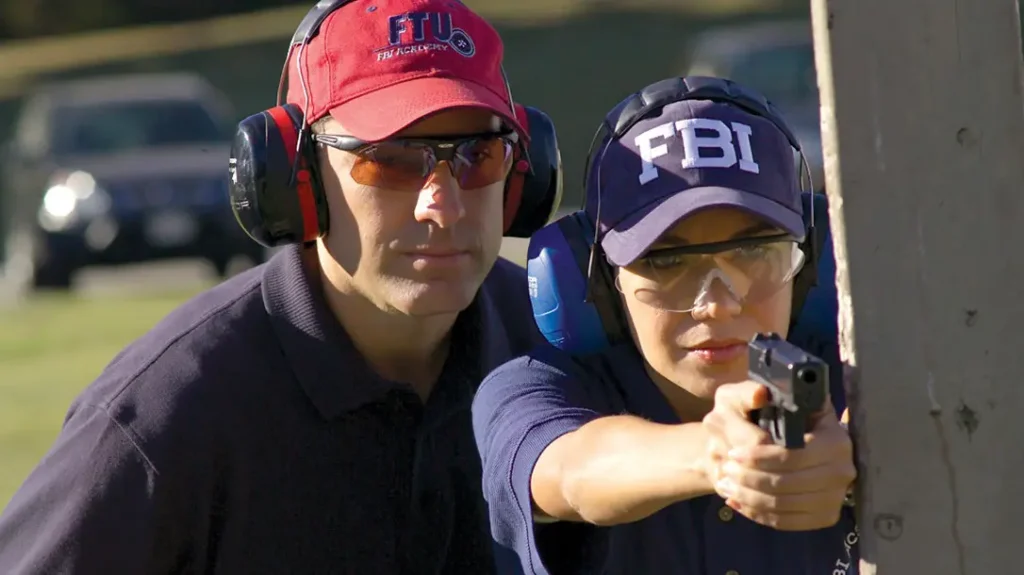No two days are alike in the world of a law enforcement officer. One day can be just plain uneventful, and the next can dole out situations that upend entire communities. Below are the 10 best law enforcement tactics for de-escalating potentially deadly situations.
Explosive Breaching

Since working with explosives is both unforgiving and destructive, not only in their intended use but also in handling and even during transport, safety and preparation are the top priorities. The key to any controlled explosion is determining not only the where and how, but when. Making an explosive charge detonate exactly when you want it to is the tough part. The St. Charles County Regional SWAT team shows how it is done with breachers that use blast tubes. When initiated, they transmit a spark down a hollow tube to the detonator, eliminating the chance of a stray signal or electrical spark prematurely detonating a charge and having a very tragic effect.
Advertisement — Continue Reading Below
Active Shooter Takedown Tactics

Advertisement — Continue Reading Below
Recent tragic events have magnified how important it is for law enforcement officers to be prepared to engage hostile threats at a moment’s notice. Since the killings in Columbine, many training programs have endeavored to train LEOs to handle these deadly threats. While agencies have adopted different tactics and procedures, the common ground is that the LEO must arrive at the scene and engage the threat ASAP.
TAPS Pistol and Carbine Tactics
Advertisement — Continue Reading Below

It is nice to experience the “real deal,” and Pat McNamara’s two-day Tactical Application of Practical Shooting (TAPS) carbine and handgun class as facilitated by Grey Group Training at the Echo Valley Training Center is just that. Based on his experiences, McNamara developed a training methodology that is safe, effective, combat-relevant and encourages a continuous thought process. Author Todd Burgreen attended a course on his Delta Force-born tactics and learned the best long-gun and pistol responses. McNamara’s methodology teaches students how to maintain safety at all times and choose targets that force accountability. Pat McNamara’s approach to instruction has a nuanced way of incorporating all of the different drills and techniques into a comprehensive skill set.
Duty Ready: Controlling the Threat

Advertisement — Continue Reading Below
A smart officer always carries multiple handcuffs and keys with one main goal: Keep a suspect secured. Handcuffing is one of the more dangerous moments in the LE-criminal encounter. It is the time when the officer is most vulnerable and the suspect’s senses are heightened—they know they are about to go to jail. Having a good set of handcuffs and being well-trained in proper handcuffing techniques can spell the difference between an easy “collar” and a life-and-death struggle. No matter what type of handcuffs you carry, be certain they are well-made and that you know how to use them properly.
Bullpup CQB Gunfighting

One of the greatest advantages of a bullpup is its shorter overall length while maintaining a standard-sized barrel. Shooters will need to spend some time with a bullpup before coming to any real conclusions, especially if they have been running an AR for a long time. Most everything done on a bullpup will be different, requiring some transition training. As a deployment rifle in an urban environment, they are excellent. The key to making the transition is an open mind and proper training time.
Advertisement — Continue Reading Below
NRA Select-Fire Course

The NRA’s Law Enforcement division has over 11,000 instructors and offers seven instructor courses: Handgun, Tactical Shotgun, Precision Rifle, Patrol Rifle, Tactical Shooting, Handgun & Shotgun, and Select-Fire. “These courses are designed for departments that want to improve their firearms training program by enhancing instructor skills and designing lesson plans based on what the instructors learned,” explained author Andy Massimilian, who learned extreme CQB SWAT techniques from the NRA’s LE Select-Fire course and shared them with our readers. Developing relevant lessons that “bring the street to the range” and comply with a department’s firearms-use policy are a major goals of the NRA course.
Gun Grab Counterstrikes

Advertisement — Continue Reading Below
While a weapon grab can come from any direction, it is more likely to come from a direction in which you aren’t focusing, as good and bad guys alike understand the element of surprise. Author Dave Spaulding recommends six street-proven tactics to retain your sidearm during an ambush. Obviously, losing control of your sidearm is nothing less than a nightmare scenario for a law enforcement officer. Your attacker can immediately turn the gun on you, or he or she can break and run and possibly escape—and use your weapon later. Neither of these options is acceptable.
Long-Range Countersniping

Author Andre Dall’au attended a 3-day class on long-range shooting sponsored by Leupold and Weatherby at the incredible Gunsite Academy. With Gunsite instructors calling the shots on the “.50 Cal Range,” students hit targets at distances from 900 to just over 1,300 yards. Because of its complexities, changes in technology and equipment, long-distance shooting is probably the most perishable of all shooting skills. While sending bullets downrange three, four, or five times a year is the minimum for “currency,” does that really keep you sharp? To learn, get out of your comfort zone with a course like this with instructors rich with recent familiarity and who are highly knowledgeable with direct field experience.
Advertisement — Continue Reading Below
First Responder Split-Second Counterstrikes

When it comes to setting the standard for domestic law enforcement operations, few groups garner the level of respect and esteem as the FBI. Widely considered to be the vanguard of cutting-edge law enforcement, the bureau’s choices regarding weapons, training, and tactics reverberate throughout the entire law enforcement community. Training for life and death situations on the street is one area where the bureau’s direction is closely heeded, and author Massad Ayoob explores their life-saving guide for CQB gunfights. Its recommendations and practices carry a great deal of weight. And, for “best practices for survival,” their reality-based course is worth much more than the time and the 60 cartridges it expends.
Domestic Terror Counterstrikes

Advertisement — Continue Reading Below
Without a plan, even a basic plan, the chances of being able to neutralize a terrorist attack are nil. Law enforcement training, to answer a military-style attack, should focus on small-unit basics: leadership, movement, and fighting tactics. To adequately confront a multi-pronged terrorist attack, law enforcement training needs to involve everyone from command-level personnel down. In order to respond successfully to these types of incidents, department leaders, supervisors, and field personnel must hold regular training exercises. For U.S. law enforcement officers and agencies now operating in an increasingly complex threat environment, having the right plan, preparation, and training is a must to be ready to respond to any single- or multi-pronged terrorist attack.
























